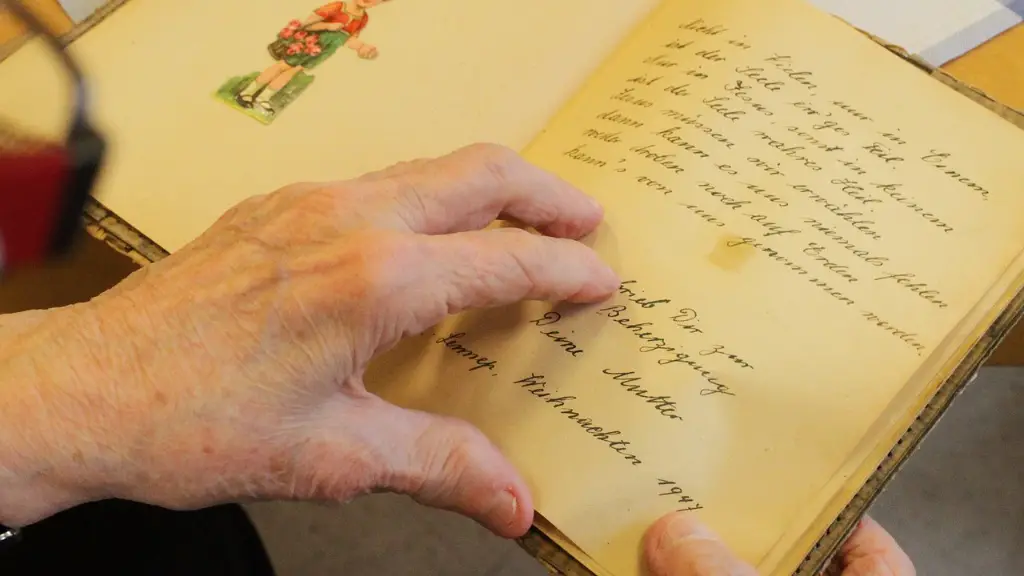Personifying Poetry
Personification is the act of attributing human attributes or characteristics to something that is not human. In poetry, personification is used to make the poem more vivid, and to create a clearer image in the reader’s mind. Personifying inanimate objects or abstract concepts can help give the poem a deeper meaning, as it gives a recognizable element to which the reader can relate.
A persona in poetry is a character created by a poet to convey a particular perspective or attitude about their subject. A persona is a literary device used to explore the emotions, motivations, and reactions of a certain state of mind or life experience. The poet can draw upon their own memories and experiences, or of a character in literature that resembles their idea of the subject. Through the use of this literary device, the poet is able to draw a better connection to the reader and create an experience that is more dramatic and real for the reader.
The implementation of a persona in a poem allows the poet to explore complex situations and emotions. It requires the poet to look at the subject from a different perspective, and to draw on their own imaginative abilities to create the voice of the person they are writing about. By personifying their subject, the poet can express the intensity of their feelings and emotions better than if they were to simply tell the story. This can help to immerse the reader in the poem and make them more engaged with how the poem conveys its message.
Personifying poetry can also help to bring a sense of realism and depth to a poem by providing the reader with a character or person that they can relate to. A poet can use this device to create a narrative of what is happening in the poem and to establish a voice that can be recognized. By giving their poem a distinct voice, the poet can engage with their audience more easily, as they can paint a more vivid picture with their words.
Personification can be used to evoke emotion in the reader, as it gives the poet an opportunity to illustrate the story of their characters and the emotions they are feeling. By personifying their subject, the poet can create a believable situation that the reader feels they can understand. By giving the character a personality, the poet can make the poem more immediate and personal for the reader.
Personifying a poem can also help a poet to explore the complexities of their subject in a way that isn’t possible with traditional storytelling. By using this device, the poet can examine their theme from numerous angles and provide a more nuanced view of their topic. This can help to create a more interesting and engaging poem for the reader.
Making the Most of Personifying Poetry
When using personification in a poem, it is important to keep in mind the overall tone and theme of the poem. Personification should be used only when it is necessary to enhance the meaning of the poem. If it is used in an overly dramatic or excessive manner, it can become distracting and will take away from the poem’s primary message. It is also important to be careful not to weaken the impact of personification by relying too heavily on clichés or stereotypes when creating a character or persona.
When making use of personification, it is helpful to take some time to create a character or persona that is truly unique. This can be done by carefully crafting each element of the persona, from their physical description to their motivations and goals. By doing this, the character will be more believable, and the reader will be more likely to connect with them and the poem’s message.
Personifying poetry can also be made more effective by writing from the first-person perspective. This gives the reader a more intimate experience, as they are able to connect with the narrator’s experiences more directly. When written in this manner, personifying poetry can become an incredibly powerful tool, as the reader is able to not only relate to the character, but also to the emotions they are feeling.
Personifying in Context
Personifying poetry is not limited to simply describing a character or creating a persona. It can also be used to examine a particular situation or event from a different angle. By creating a character that embodies the struggles and emotions associated with the event or situation, the poet can create a powerful narrative of what is happening. This can help to make the poem more immediate and engaging for the reader, and can also help to provide valuable insight into the subject matter.
Personifying poetry can be a great way to explore difficult topics in a unique and more meaningful way. By using this device, the poet can give the reader an experience that is both memorable and impactful. Through the implementation of a persona, the poet can create a story that is more vivid and true to life than traditional storytelling would allow.
Exploring Themes with Personification
Personification in poetry can also be used to explore different themes. By creating a persona in the poem, the poet can examine the theme from a different perspective and provide valuable insight into the complexities of the subject. The persona can bring the theme to life in a way that is both engaging and enlightening for the reader, while also helping to provide a more nuanced view of the subject.
The use of a persona in a poem can also allow the poet to explore different feelings and emotions associated with the theme. By creating a character that embodies these feelings, the reader can understand them more intimately and be more likely to empathize with them. This can help to create a powerful and meaningful experience for the reader, and can allow them to gain a better understanding of the theme.
Personifying a poem can also be used to provide insight into the deeper meanings of a particular theme or idea. By giving a voice to a character who embodies the subject matter, the poet can draw attention to certain aspects of the theme that might otherwise remain unnoticed. This can help to create a stronger connection between the reader and the poem, and provide a more meaningful overall experience.
Connecting with the Reader
Ultimately, personifying poetry can be a great way to draw a stronger connection between the poet and the reader. By creating a believable character in the poem, the poet can provide a more intimate and personal experience for the reader, as they feel more connected to the poem’s message. This can help to create a more enjoyable and engaging experience for the reader, and can help to create a more meaningful poem.
Personifying poetry can also be used to explore more complex topics in a unique and engaging way. By using this device, the poet can provide insight into the emotions, motivations, and reactions of a certain state of mind or life experience. This can help to make the poem more immediate and impactful for the reader, and can also help to create a more meaningful and engaging experience.
Exploring the Possibilities
Personifying poetry can be a great tool for exploring the complexities of a subject and providing the reader with an engaging experience. By creating a believable character or persona in the poem, the poet can draw closer to the reader and make their message more impactful. Through the use of this device, the poet can explore different angles of their theme and provide valuable insight into the subject matter.
Personifying poetry can be a powerful device for expressing a poet’s feelings and ideas. By giving their poem a distinct voice, the poet can deepen the reader’s experience and create a more intimate and meaningful connection between the reader and the poem. This can allow the poet to explore complex topics in a unique and engaging way, and can create an enjoyable and memorable experience for the reader.




